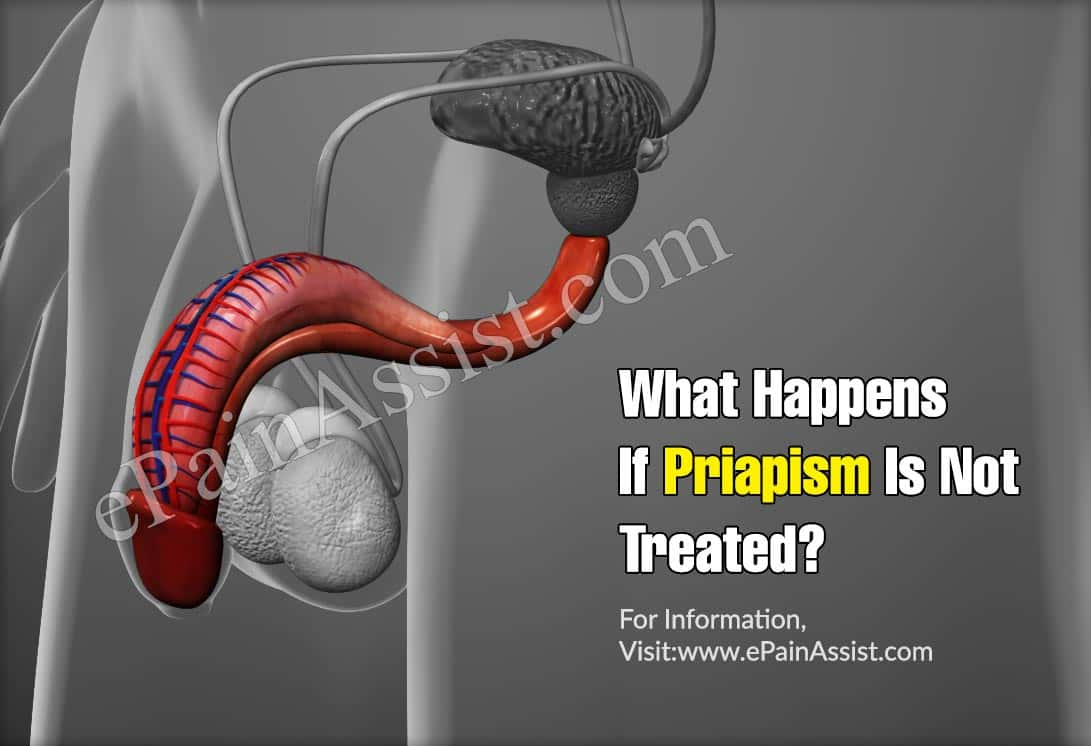Priapism is medical condition characterized by prolonged and unwanted erection of penis. The erection is not caused by any form of sexual arousal and can be extremely painful to the affected individual.
Arterial priapism is caused due to blood not being able to exit the penis while venous priapism occurs due to excessive blood flow into the penis as a result of an injury to the penis causing damage to an artery.

What Happens if Priapism is Not Treated?
Priapism is considered a medical emergency that must receive adequate treatment by a qualified physician. The prognosis for the patient improves as long as it is properly treated on time. Nevertheless, if a patient denies receiving treatment, hoping that it will go away on its own, permanent damage to the male genital may occur.
Patients with this condition should seek medical attention immediately, especially if the erection lasts more than 4 hours. It is essential to determine the type of priapism (ischemic or nonischemic) because the treatment for each of them is different, as explained below:
Ischemic Priapism
-Aspiration. Emergency room treatment includes aspirating blood from the cavernous bodies of the penis with local anesthesia through a needle. This treatment calms the priapism pain, cleanses the tissues off of deoxygenated blood and thus brings down the unwanted erection. The treatment can be repeated until the moment the erection is over.
-Intracavernous Injection. If the aspiration procedure is not enough, injections of phenylephrine into the tissues of penis are done. The medication makes the blood vessels supplying blood to the penis narrow thus restricting excess blood flow in the area. This opens up the vessels that carry blood from the penis to open up thereby decreasing the accumulation of blood in the penis. The treatment may be repeated until optimal results are obtained. Caution needs to be maintained when treating priapism through this method of treatment as there may be certain side effects especially in hypertensives or people with cardiovascular conditions.
-Surgical Derivation. If all conservative approaches do not yield results then the physician may opt for implantation of a shunt in the penis which will provide a passage for the blood to seep out from the area and restore normal blood flow.
People with a condition called sickle cell anemia who have priapism need to receive oxygen supplements and intravenous fluids to maintain hydration.
Non-ischemic Priapism
Non-ischemic priapism tends to be a self-limiting condition which does not always require any treatment. Observation is the approach taken by physicians in such cases as there is no imminent danger to the functioning of the penis. Applying ice and pressure in the perennial area is good enough to bring down the unwanted erection.
Surgery may be required in some cases where absorbable implants may be inserted to block the flow of blood temporarily till the time the implant is absorbed by the body. Surgery may also be necessary to treat any damaged tissue or arteries as a result of some injury to the penile area.
Prognosis
Complications
Ischemic priapism may lead to potentially serious complications. Blood trapped within the penile area becomes oxygen deficient which tends to cause significant damage to the tissues. When the erection lasts more than 4 hours, the deoxygenated blood starts to coagulate (penile thrombosis) and damage or destroy the tissues of the penis. Ultimately, untreated priapism can cause:
-ED or impotence, the inability of the penis to get to stay erect with sexual arousal.
-Disfiguration of the penis.
In severe cases, gangrene may occur, death of penile tissues, and in the worst case, castration or penectomy (surgical removal of the penis) may be necessary.
Also Read:
